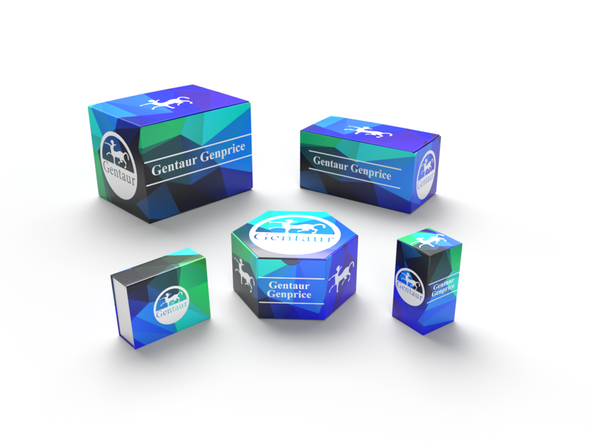740
Mouse Activin receptor type-2B (ACVR2B) ELISA Kit | AE23726MO
- SKU:
- 740-AE23726MO
- Availability:
- Usually ships in 5 working days
Description
Mouse Activin receptor type-2B (ACVR2B) ELISA Kit | AE23726MO | Gentaur UK, US & Europe Distribution
Species Reactivity: Mouse (Mus musculus)
Abbreviation: ACVR2B
Alternative Name: ACTRIIB; ActR-IIB; MGC116908;
Application: ELISA
Range: 18.75-1200 pg/mL
Sensitivity: 4.68 pg/mL
Intra-Assay: ≤6.8%
Inter-Assay: ≤10.2%
Recovery: 0, 99
Sample Type: Serum, Plasma, Other biological fluids
Detection Method: Sandwich
Analysis Method : Quantitive
Test Principale: This assay employs a two-site sandwich ELISA to quantitate ACVR2B in samples. An antibody specific for ACVR2B has been pre-coated onto a microplate. Standards and samples are pipetted into the wells and anyACVR2B present is bound by the immobilized antibody. After removing any unbound substances, a biotin-conjugated antibody specific for ACVR2B is added to the wells. After washing, Streptavidin conjugated Horseradish Peroxidase (HRP) is added to the wells. Following a wash to remove any unbound avidin-enzyme reagent, a substrate solution is added to the wells and color develops in proportion to the amount of ACVR2B bound in the initial step. The color development is stopped and the intensity of the color is measured.
Product Overview: ACVR2B is an activin type 2 receptor. Activins signal through a heteromeric complex of receptor serine kinases which include at least two type I (I and IB) and two type II (II and IIB) receptors. These receptors are all transmembrane proteins, composed of a ligand-binding extracellular domain with cysteine-rich region, a transmembrane domain, and a cytoplasmic domain with predicted serine/threonine specificity. Type I receptors are essential for signaling; and type II receptors are required for binding ligands and for expression of type I receptors. Type I and II receptors form a stable complex after ligand binding, resulting in phosphorylation of type I receptors by type II receptors. Type II receptors are considered to be constitutively active kinases.
Stability: The stability of ELISA kit is determined by the loss rate of activity. The loss rate of this kit is less than 5% within the expiration date under appropriate storage condition. The loss rate was determined by accelerated thermal degradation test. Keep the kit at 37°C for 4 and 7 days, and compare O.D.values of the kit kept at 37°C with that of at recommended temperature. (referring from China Biological Products Standard, which was calculated by the Arrhenius equation. For ELISA kit, 4 days storage at 37°C can be considered as 6 months at 2 - 8°C, which means 7 days at 37°C equaling 12 months at 2 - 8°C) .






